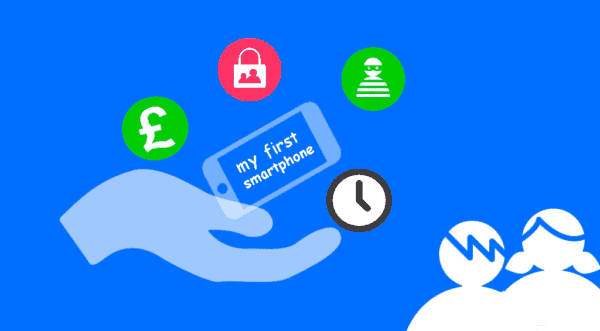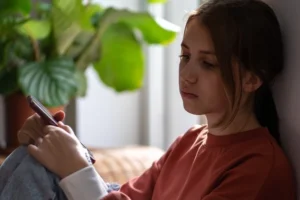Is my child ready for a smartphone?
There’s no minimum age limit for mobile phones; it’s a personal decision. Many children get mobiles around the age of 11, when they start secondary school, and 90% of teenagers in the UK now have one.
While there are numerous advantages to having a smartphone – including being able to stay in touch with mum, dad and other family members more easily – it’s worth asking yourself things like: Do they really need a smartphone? Are they mature and responsible enough to have one? And what are their school’s rules on smartphones?
Which smartphone and tariff should I choose for them?
Your son or daughter might well have a particular smartphone on their wish list but it’s a good idea to look for devices that let you manage the phone features yourself – the iPhone provides built-in parental controls called ‘Restrictions‘ and the Samsung Galaxy has Kids Mode for example.
You can find advice about putting parental controls on your child’s devices on Vodafone’s Digital Parenting website and in the Internet Matters interactive step by step guide.
How much will it cost?
When it comes to tariffs for your child’s phone, see if you can get a price plan designed with families in mind. Some plans cover multiple SIMs, which means everyone in your family can have a device of their own and you can control each person’s data allowance from one place (e.g. Vodafone Red+).
It’s also worth setting some rules for your child’s smartphone use in terms of how often they use it and what they use it for. Premium rate services (such as competition lines) and using their phone when they are on holiday abroad can quickly add up. Check with your mobile provider for specific costs – Vodafone provides advice about managing costs on its website, for example.
How can I help my child stay safe and secure?
Having a smartphone is a big responsibility for any child so you’ll find lots of advice on Vodafone’s Digital Parenting website, including articles about digital privacy and reputation.
If bullying is one of your biggest concerns, take a look at The Diana Award’s anti-bullying guidance on page 28 of Vodafone’s Digital Parenting magazine, check out the #BeStrong Online emojis and let your child’s school know about the Be Strong Online resources for teachers, which have been developed by Vodafone and The Diana Award.
How much screen time is the right amount?
It’s an individual choice for every family but, as a general rule, it makes sense to encourage a healthy balance between screen time and other activities, such as sport and seeing friends.
Smartphones are great for socialising and entertainment but you might want to set some limits on your child’s screen time, such as switching devices off when they’re doing their homework and not taking them to bed. Some devices and apps include time limit features to help you do this.
If you don’t want your son or daughter to be on their phone 24/7, one final word of advice: take a little time away from your own devices. Switch your mobile off when you’re having dinner together and don’t be tempted to take a peek when you’re helping them with their school project. Family time is precious; those work emails and WhatsApp messages can wait.





